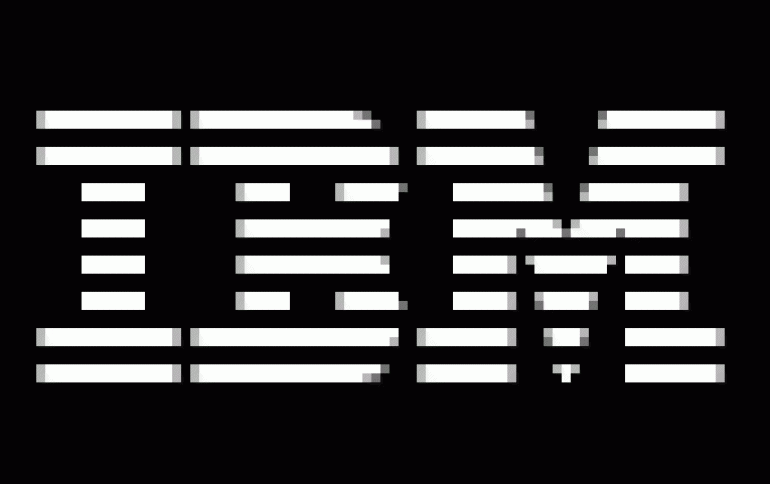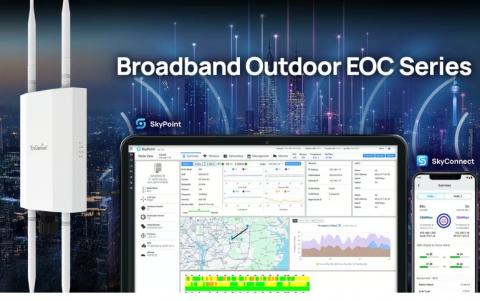
IBM Renews Microsoft Rivalry With New Web Software
IBM's Lotus unit will introduce on Monday a set of social networking services that functions like a MySpace for office workers and which analysts say marks a renewed challenge to Microsoft.
Lotus is going back to its roots as a pioneer of business collaboration software with a service called Connections that features the latest ways for users to share information via the Web, while giving businesses controls over who sees what data.
Lotus Connections offers the business equivalent of Web meeting places like MySpace.com or Facebook, Yahoo's bookmark sharing site del.icio.us and blog search tools like Technorati.com -- stitched together in one package.
Peter O'Kelly, a collaboration software expert with Burton Group, said the new software from IBM Lotus promises to shake up a market dominated by Microsoft, where IBM, Oracle and Adobe also compete.
The new offering could chip away at Microsoft's lead in the collaboration and e-mail messaging market, where five years ago Microsoft Outlook e-mail and its newer SharePoint collaboration software began to surge past rival IBM products, O'Kelly said.
While exact numbers are hard to come by, last year IBM said Lotus Notes had 125 million users. Adding in collaboration software, Lotus users number around 150 million, O'Kelly said. Microsoft has 200 million Outlook users and signed up another 80 million licensed users of SharePoint software, he estimated.
IBM officials see a shift in focus from the quest for personal productivity that characterized computer advances of the 1990s to the "team productivity" which Web-based collaborative tools have begun to enable in recent years.
Connections combines five components: member profiles, activities, blogs, communities and "dogear" -- IBM's word for how users identify and share Web bookmarks with colleagues.
Connections uses the popular Web navigation technique of "tagging" to help users track popular discussion topics and figure out who may have expertise on any subject.
The software provides a way for individuals to quickly set-up ad hoc groups to collaborate on projects, storing relevant documents, e-mails and Web sites together. Each user can publish blogs to share ideas with colleagues.
Lotus Connections will become generally available later in the first half of 2007. Pricing hasn't been disclosed.
It is designed to run as a separate set of Web services that work for both existing and potential new Lotus customers. It acts as an enhancement to, but independent of existing Lotus software such as IBM's e-mail, group collaboration and document management system, Lotus Notes, and IBM's business instant messaging system, Sametime. It's also meant to work for customers of Microsoft's database, e-mail and Web software.
O'Kelly said IBM's Web software could cause many corporate buyers who stopped considering Lotus Notes a decade ago to reconsider their reliance on Microsoft's rival software suite.
Lotus Connections offers the business equivalent of Web meeting places like MySpace.com or Facebook, Yahoo's bookmark sharing site del.icio.us and blog search tools like Technorati.com -- stitched together in one package.
Peter O'Kelly, a collaboration software expert with Burton Group, said the new software from IBM Lotus promises to shake up a market dominated by Microsoft, where IBM, Oracle and Adobe also compete.
The new offering could chip away at Microsoft's lead in the collaboration and e-mail messaging market, where five years ago Microsoft Outlook e-mail and its newer SharePoint collaboration software began to surge past rival IBM products, O'Kelly said.
While exact numbers are hard to come by, last year IBM said Lotus Notes had 125 million users. Adding in collaboration software, Lotus users number around 150 million, O'Kelly said. Microsoft has 200 million Outlook users and signed up another 80 million licensed users of SharePoint software, he estimated.
IBM officials see a shift in focus from the quest for personal productivity that characterized computer advances of the 1990s to the "team productivity" which Web-based collaborative tools have begun to enable in recent years.
Connections combines five components: member profiles, activities, blogs, communities and "dogear" -- IBM's word for how users identify and share Web bookmarks with colleagues.
Connections uses the popular Web navigation technique of "tagging" to help users track popular discussion topics and figure out who may have expertise on any subject.
The software provides a way for individuals to quickly set-up ad hoc groups to collaborate on projects, storing relevant documents, e-mails and Web sites together. Each user can publish blogs to share ideas with colleagues.
Lotus Connections will become generally available later in the first half of 2007. Pricing hasn't been disclosed.
It is designed to run as a separate set of Web services that work for both existing and potential new Lotus customers. It acts as an enhancement to, but independent of existing Lotus software such as IBM's e-mail, group collaboration and document management system, Lotus Notes, and IBM's business instant messaging system, Sametime. It's also meant to work for customers of Microsoft's database, e-mail and Web software.
O'Kelly said IBM's Web software could cause many corporate buyers who stopped considering Lotus Notes a decade ago to reconsider their reliance on Microsoft's rival software suite.





















